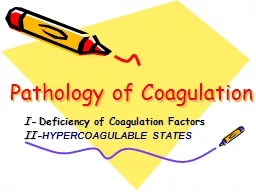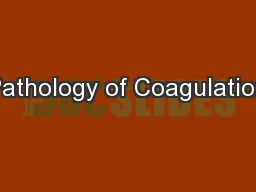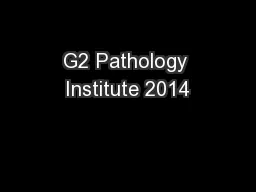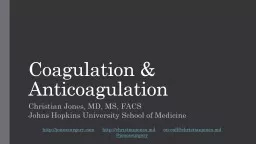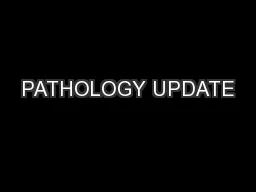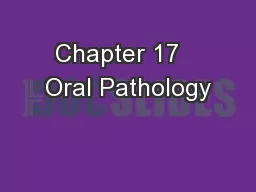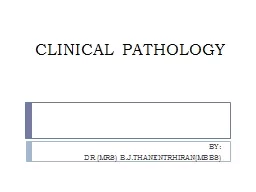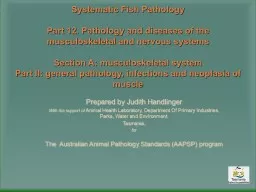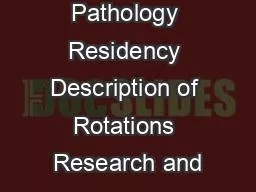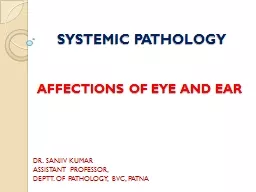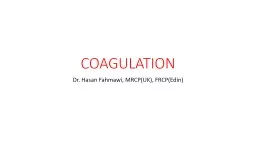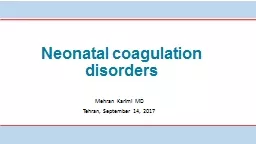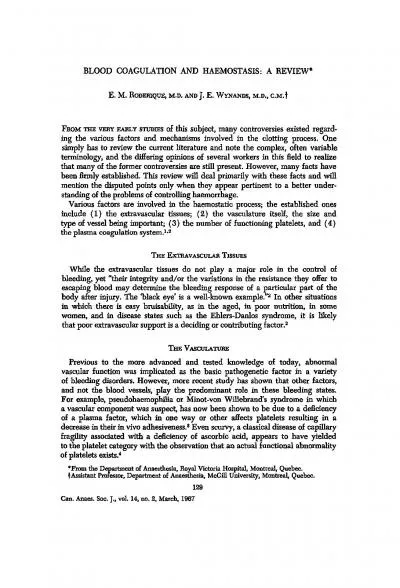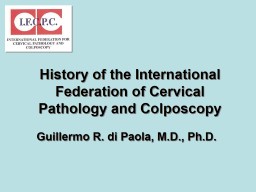PPT-Pathology of Coagulation
Author : phoebe-click | Published Date : 2016-09-05
I Deficiency of Coagulation Factors II HYPERCOAGULABLE STATES I Deficiency of Coagulation Factors Treatment AQUIRED DISORDERS OF BLOOD COAGULATION ACQUIRED DISORDERS
Presentation Embed Code
Download Presentation
Download Presentation The PPT/PDF document "Pathology of Coagulation" is the property of its rightful owner. Permission is granted to download and print the materials on this website for personal, non-commercial use only, and to display it on your personal computer provided you do not modify the materials and that you retain all copyright notices contained in the materials. By downloading content from our website, you accept the terms of this agreement.
Pathology of Coagulation: Transcript
I Deficiency of Coagulation Factors II HYPERCOAGULABLE STATES I Deficiency of Coagulation Factors Treatment AQUIRED DISORDERS OF BLOOD COAGULATION ACQUIRED DISORDERS OF BLOOD COAGULATION. Prof . Khaled. . Yassen. MD FFARCSI. Department of . Anaesthesia. Liver Institute, . Menoufiya. University, Egypt.. kyassen61@hotmail.com. Old and New Liver Institute, . Menoufiya. University, Egypt. I-. Deficiency of Coagulation Factors. II-. HYPERCOAGULABLE STATES . I-. Deficiency of Coagulation Factors. Treatment. AQUIRED DISORDERS. OF. BLOOD COAGULATION. ACQUIRED DISORDERS. OF. BLOOD COAGULATION. Fee for Service vs. Salaried Positions: Calculating the Risks. 1. Mick Raich . Vachette Pathology. 1996 I helped buy practices for a multispecialty practice. Capitation fear drove the buying concept. Now ACO fear is driving the buying. . Christian Jones, MD, MS, FACS. Johns Hopkins University School of Medicine. http://jonessurgery.com. . http://christianjones.md. . on-call@christianjones.md. . @. jonessurgery. Overview. Dr Steve . Kamiza. . FCPath. . Dr . Tamiwe . Tomoka. . FCPath. TISSUE IS THE ISSUE. Background . to pathology services in Malawi. Establishment of the QECH and UNC/KCH labs. Pathology: Research with emphasis on cancer. Introduction to Oral Pathologies. Pronounce, define, and spell the Key Terms.. Explain why oral pathology is important for the dental assistant.. Describe the steps necessary to make a diagnosis.. Describe the difference between acute and chronic inflammation, including the classic signs of inflammation.. DR (MRS) B.J.THANENTRHIRAN(MBBS). Pathology is the study (logos) of suffering (pathos).. Pathology address following components of disease. . Cause / . Etiology. Incidences . Mechanisms of development (. Part 12. . Pathology and diseases of . the musculoskeletal and nervous systems. Section A: musculoskeletal . system. Part II: general pathology, infections and neoplasia of muscle . Prepared by Judith Handlinger . 1x0000x0000 x/MCIxD 1 x/MCIxD 1 General structure of curriculumDesigned to provide complete training in all major areas of anatomic and clinical pathologyFlexibleaccommodatediversecareergoalscommunity DR. SANJIV KUMAR. ASSISTANT PROFESSOR,. DEPTT. OF PATHOLOGY, BVC, PATNA. Structure of eye. Anatomical features. The . eye ball is located . the . orbit. . It is protected by eyelids, which have . stratified . Edin. ). Haemostasis-blood must be maintained in a fluid state in order to function as a transport system, but must be able to solidify to form a clot following vascular injury in order to prevent excessive bleeding, a process known as haemostasis. It is localised to the tissue damage and is followed by removal of the clot and tissue damage.. Mehran Karimi MD. Tehran, September 14, 2017. Agenda. Background. Causes of bleeding and Clinical manifestations. Classification of coagulation disorders in neonates. Primary investigation and diagnostic evaluation. M. AND J. E. WYNANDS, M.D., C.IVI.~ THE V~Y F_~aLY STUVmS of this subject, many controversies existed regard- ing the various factors and mechanisms involved in the dotting process. One simply has to . Guillermo R. di Paola, M.D., Ph.D.. History of the International Federation of Cervical Pathology and Colposcopy. Adapted by. . Patrick George Walker. President 2008-2011. The Birth and Development of Colposcopy.
Download Document
Here is the link to download the presentation.
"Pathology of Coagulation"The content belongs to its owner. You may download and print it for personal use, without modification, and keep all copyright notices. By downloading, you agree to these terms.
Related Documents

